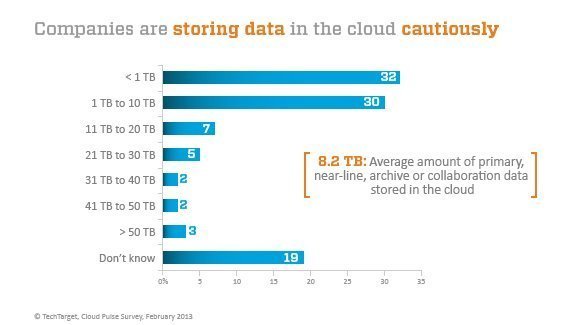Survey finds cloud storage implementation growing but cautious
Backup and disaster recovery were the first cloud storage services, so most companies get their first taste of cloud storage looking for data protection alternatives. But storage in the cloud is now a practical alternative or complement to in-house primary or near-line storage, so more companies are now storing data in the cloud.
Twenty-seven percent of cloud storage users are tapping into the cloud to store primary data -- recently created or modified data that's likely to be accessed in the short term. Cloud storage is viable in those situations largely because on-site cloud gateway appliances and deduplication and compression make retrieving data in the cloud (or bound for the cloud) nearly as quick a process as accessing data on local arrays.
For near-line data, data that won't be accessed very frequently, cloud storage is an even better alternative. With data storage in the cloud, a company only pays for the disk capacity it uses; if the data is maintained in-house, additional expenses would include power to keep the disks spinning and to cool the arrays, and the cost of having staff manage and maintain the storage gear.
With growing interest in collaborative tools, more companies are likely to put shared data in the cloud where it can be accessed easily by remote workers.







